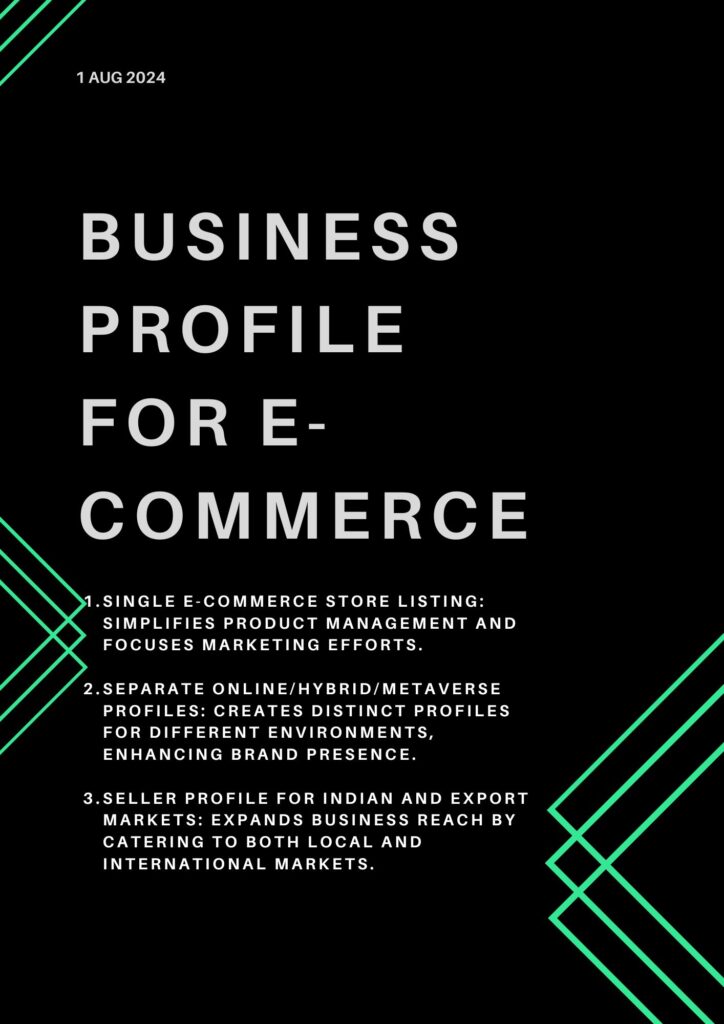


An eCommerce Manager for the international market plays a critical role in managing and expanding the online sales channels across different countries. Here’s a breakdown of their typical roles and responsibilities.

.
.
____
____
.

Market Analysis: Conduct in-depth research to understand market trends, customer preferences, competitors, and regulatory requirements in various countries.
Localization Strategy: Develop and implement strategies for localizing the online store, including language, payment methods, and cultural preferences.
Expansion Plans: Identify and evaluate new market opportunities and create expansion plans for entering new international markets.

Market Analysis: Conduct in-depth research to understand market trends, customer preferences, competitors, and regulatory requirements in various countries.
Localization Strategy: Develop and implement strategies for localizing the online store, including language, payment methods, and cultural preferences.
Expansion Plans: Identify and evaluate new market opportunities and create expansion plans for entering new international markets.

Product Blender Advertisement Creation: Oversee the creation of high-quality 3D product advertisements using Blender, ensuring that visuals are appealing and tailored to the preferences of international audiences.
Motion Graphics Ad Creation: Lead the development of engaging motion graphics ads that can be used across various digital platforms, ensuring they resonate with the target market and align with brand guidelines.
Coordination with Creative Teams: Collaborate with designers, animators, and external agencies to produce compelling visual content.
Content Localization: Ensure that all creative content, including 3D ads and motion graphics, is localized for different international markets.

Market Place Marketing: Focused on enhancing your visibility on various e-commerce platforms, this service includes optimization techniques tailored to each marketplace.
Content Marketing: The agency will create engaging content that resonates with your target audience, driving traffic and building brand authority.
Performance Marketing: Through data-driven strategies, this service aims to maximize your return on investment by focusing on measurable results, such as conversions and sales.
Influencer Marketing: The agency collaborates with influencers who align with your brand, helping you reach a wider audience through trusted voices.
PR Marketing: Public relations campaigns will be designed to enhance your brand’s reputation, with media coverage and strategic communication efforts

International Marketing Campaigns: Design and execute digital marketing campaigns tailored to different international markets, including PPC, social media, email marketing, and affiliate marketing.
Sales Targets: Set and achieve sales targets for each international market, regularly reviewing performance and adjusting strategies as needed.
Brand Building: Ensure consistent brand messaging across all international platforms while adapting to local cultural nuances.

Cross-Border Shipping: Manage and optimize international shipping processes, including dealing with customs, duties, and import/export regulations.
Inventory Management: Coordinate with supply chain teams to ensure sufficient stock levels in international warehouses or fulfillment centers.
Vendor Relations: Work with international vendors and suppliers to ensure the smooth operation of the supply chain.

Localized Customer Support: Establish and manage customer service teams that can handle inquiries in local languages and time zones.
Return Policies: Develop and implement international return policies that comply with local laws and customer expectations.
Customer Satisfaction: Monitor customer feedback and implement strategies to improve the international customer experience.

Compliance and Risk Management
Legal Compliance: Ensure that the eCommerce operations comply with international trade laws, data protection regulations (such as GDPR), and other relevant legal requirements.
Risk Management: Identify and mitigate risks associated with international eCommerce, such as fraud, currency fluctuations, and political instability.

Data Analysis: Use analytics tools to track the performance of international online stores, identifying trends, opportunities, and areas for improvement.
Reporting: Prepare regular reports on key performance indicators (KPIs) for senior management, providing insights into international market performance.
Continuous Improvement: Implement changes based on performance data to optimize the international eCommerce strategy continuously.

Cross-Functional Collaboration: Work closely with other departments such as marketing, IT, finance, and logistics to ensure the successful execution of international eCommerce strategies.
Partnerships: Develop and maintain relationships with international partners, including payment gateways, logistics providers, and marketing agencies.

Budget Planning: Develop and manage budgets for international eCommerce operations, ensuring that all initiatives are cost-effective and aligned with overall business goals.
Cost Control: Monitor and control expenses related to international operations, looking for opportunities to optimize costs.

Tech Integration: Stay updated on the latest eCommerce technologies and integrate relevant tools and platforms to enhance international operations.
Process Automation: Implement automation solutions to streamline international processes, from marketing to order fulfillment.

Sustainable Packaging Solutions: Lead the initiative to implement biodegradable packaging options for products, ensuring they meet environmental standards and resonate with eco-conscious consumers in international markets.
Graphic Design for Packaging: Oversee the creation of attractive and culturally relevant packaging graphics that appeal to customers across different regions, enhancing brand perception and customer satisfaction.
Supplier Coordination: Work closely with packaging suppliers to source and develop eco-friendly materials that align with both sustainability goals and market expectations.
Customer Communication: Highlight the use of biodegradable packaging in marketing efforts, educating customers on the benefits and reinforcing the brand’s commitment to sustainability.
—

